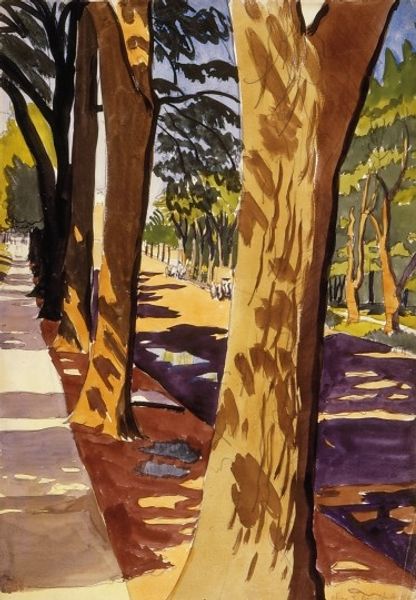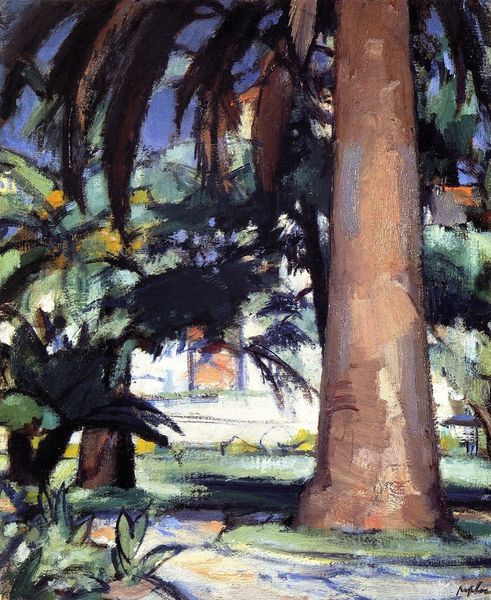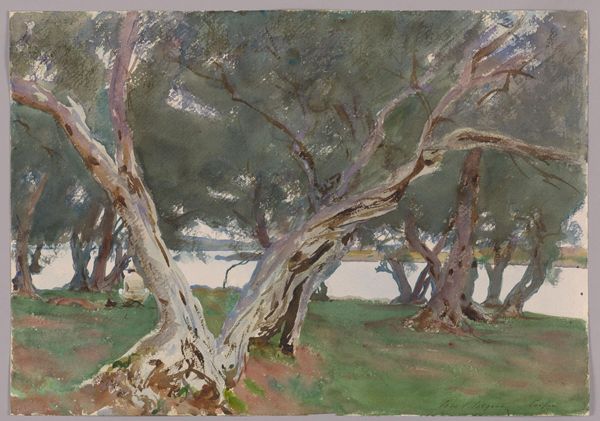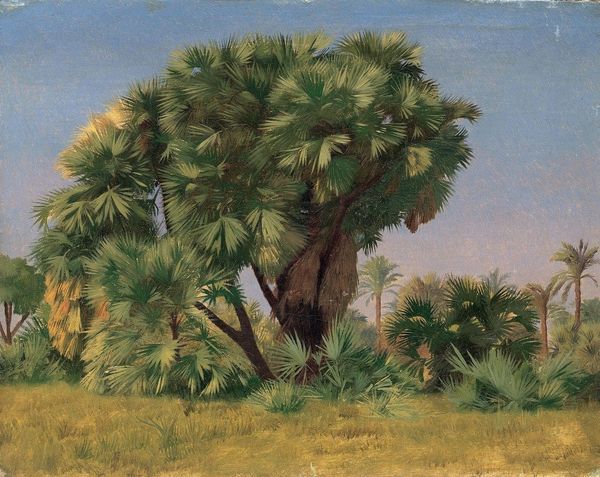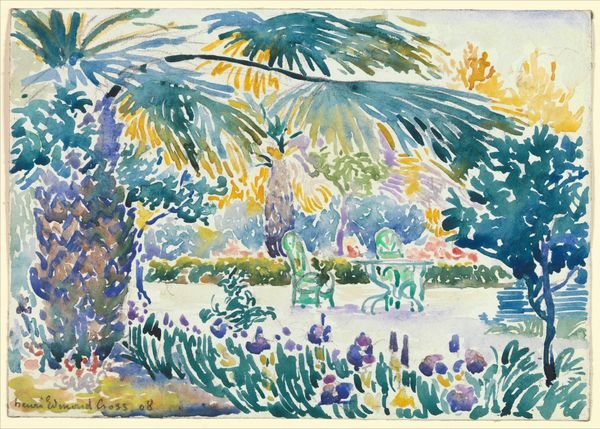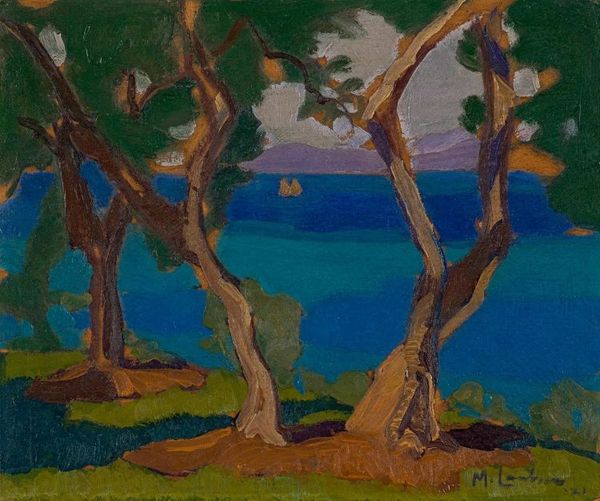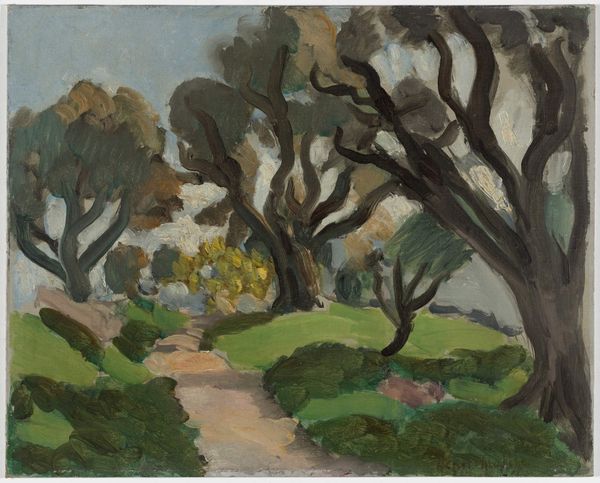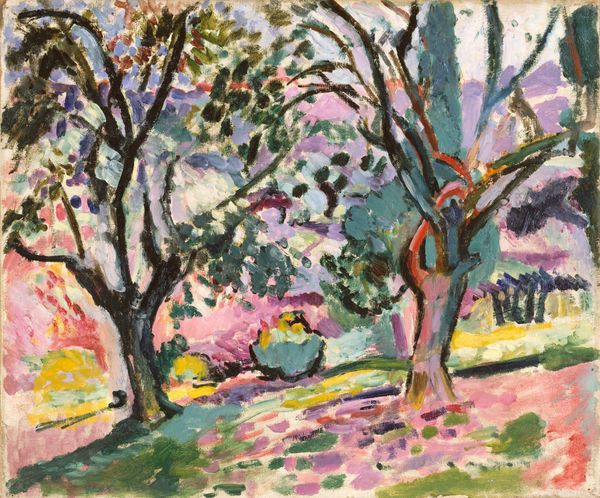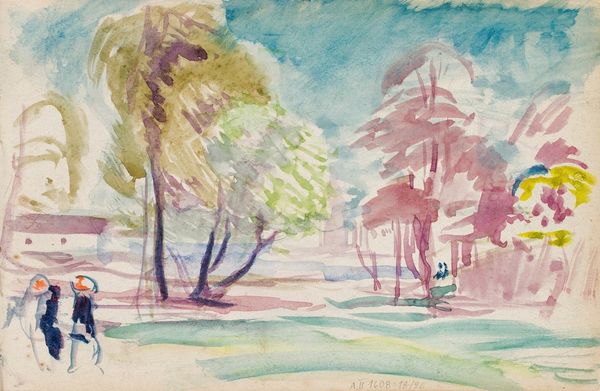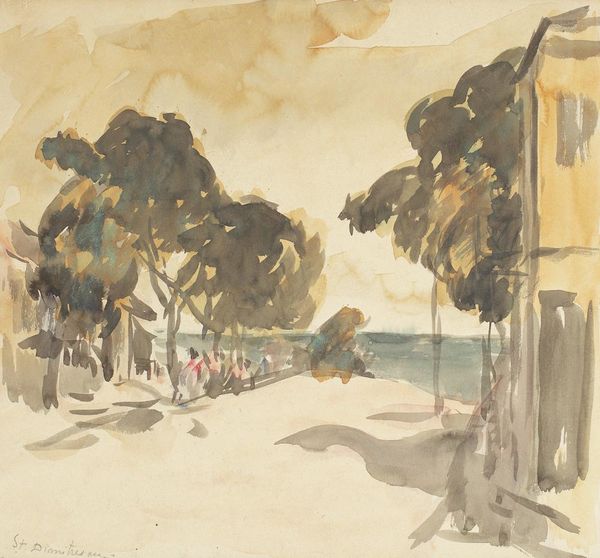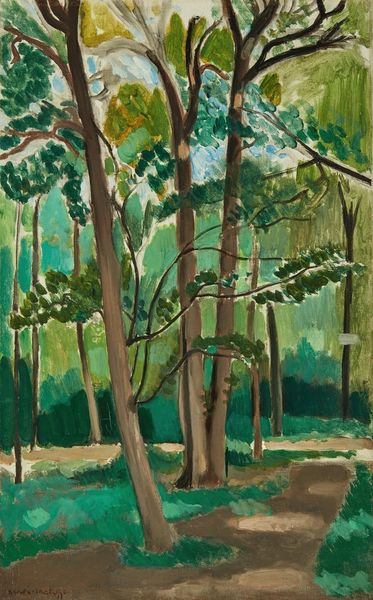
Copyright: Edward Hopper,Fair Use
Editor: So, this watercolor is "Folly Beach, Charleston, South Carolina" by Edward Hopper, painted in 1929. I’m really drawn to how Hopper uses the watercolor medium; it's quite different from his oil paintings, lighter, airier somehow. What stands out to you? Curator: What I notice is the layering of material: the watercolor itself applied in washes and strokes, suggesting both depth and flatness; then consider the depicted scene itself – a shoreline, the edge of land, a place of transition. Are we meant to contemplate the materials consumed and expended to create leisure spaces, vacation spots like Folly Beach? Editor: That’s an interesting perspective. I was just seeing a pleasant beach scene. I hadn't really considered it in terms of material or…consumption. Curator: Well, Hopper was painting this in 1929, right before the Great Depression fully hit. So there's that element: a document, maybe an indictment, of class division and the resources supporting leisure for some. Even the watercolor, the pigments used, connects back to material extraction. Do you see any social commentary embedded here? Editor: Hmm, the somewhat isolated figures in the background could imply something. Maybe it isn’t just a simple landscape. How much would materials have played into the general consciousness at the time? Curator: That's a good question. Think about the rise of industrialism. New materials, new manufacturing processes, shaping everyday life. Watercolor itself becoming more widely available due to industrial production, enabling artists to paint ‘en plein air.’ This creates an accessible image of a scene available to a specific class. Editor: So even something that appears simple, like a watercolor landscape, can tell us a lot about production, class, and materials. Curator: Exactly. The how and what of making art. The labor of leisure reflected in artistic labor. Food for thought.
Comments
No comments
Be the first to comment and join the conversation on the ultimate creative platform.
